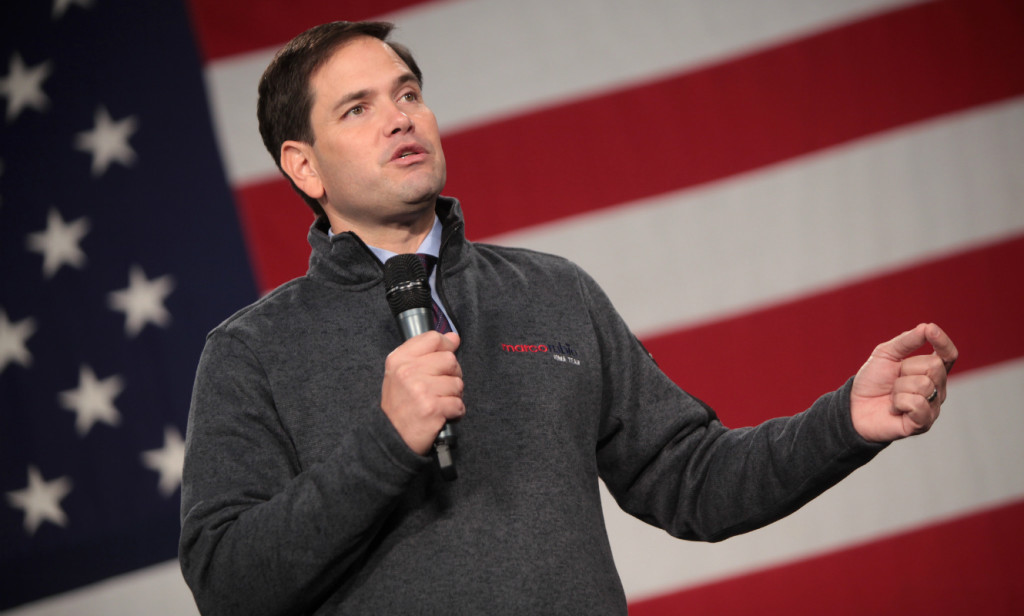Marco Rubio’s Plan to Rebuild and Modernize the Military is the Right One

Last Thursday in New Hampshire, Republican presidential candidate and Florida Senator Marco Rubio unveiled his plan to rebuild and modernize the nation’s military. By way of disclosure, I am a Rubio supporter and fundraiser, and so my interest in writing about his plan should not in any way be considered detached or unbiased. That said, this is an excellent plan that balances necessary force structure enhancements with a clear understanding of the growing readiness crisis and the need to incorporate new technologies in a more streamlined and efficient manner.
The campaign fact sheet outlining the plan can be found here. Although I certainly urge you to read it and form your own judgments, I invite your attention to six particular aspects of the plan:
1. Rubio’s plan is a broad-based approach to increasing the nation’s defense posture, stressing capacity, capability, modernization, technology, readiness, and posture. It appears that Senator Rubio recognizes that a new era of Great Power contention is upon us, an era that the Obama administration has not (and likely will not) awakened to.
2. Under a “President Rubio,” it appears that the Obama administration’s “pivot to Asia” will cease to be the central operational thrust of U.S. military strategy. Not that it will be reversed, as he envisions a second aircraft carrier in the theater (and more escorts and amphibious forces), along with additional land-based air power and increased Army mobility there. What is different is that U.S. military commands in Europe and the Middle East will no longer be considered the force providers to prop up America’s interests in the Pacific. Rubio is advocating a true “three region” approach to posturing U.S. military power, with land, sea, and air forces returning to Europe to counter Russian aggression, along with a bolstered air and naval presence in the Middle East as a counter to Iran, flush with cash to fund its mischief as a result of the recent nuclear deal (which he has promised elsewhere to repudiate “on day one.”)
3. In another recognition of a new age of Great Power contention, Rubio pledges to build the Navy’s ballistic missile submarine (SSBN(X)), and the Air Force LRS-B, while modernizing the U.S. nuclear arsenal across the board and arresting further decline in its size. An effective triad is the “table stakes” for strategic deterrence in a future where current nuclear counter-proliferation regimes seem increasingly unlikely to contain what is essentially seven-decade-old technology.
4. As a navalist, I am heartened not only by his plans for the Navy and the Marine Corps, but by his plan’s emphasis on force structure and capability increases. I am especially happy to see the priority he is placing on undersea warfare and electronic warfare, two enablers of naval power that must continue to receive emphasis if the U.S. Navy is to continue its primacy. I realize this does not necessarily convey priority, but with Speaker Paul Ryan’s pronouncement on the size of the Navy last week, a larger Navy is fast becoming Republican dogma. Personally, I would like to see an even larger Navy, but his plan for a 323-ship fleet by 2024 is eight ships larger than the current administration’s plan for the same year (although the current plan is underfunded by some $5 billion annually across its breadth when compared to historical levels of spending on shipbuilding). The use of the phrase “at least” gives me hope.
5. The alarming decline in ground forces planned by the current administration is also reversed in this plan, with the Army and Marine Corps returning to pre-9/11 levels, again, in recognition of the continuing importance of Europe and the Middle East.
6. One area in the plan that I was happy to see — but which I believe deserves even greater emphasis — is its section on posturing the force “…for the Cyber Era.” Rubio is clearly positioning himself as the candidate of the future, and the future — not only of warfare, but of everyday economic security — is one of nearly constant cyber monitoring, intrusion, and attack. Put another way, cyber is a cross-cutting issue that should be more prominently discussed in this campaign, by all candidates. In my view, we need to consider building up a Cold War-like “civil defense” program that raises the cyber awareness of our entire citizenry in a manner that promotes local responses and education beginning at the elementary school level. As one friend put it, cyber is “the ultimate STEM issue.”
Rubio’s plan also calls for reform to both acquisition policy and personnel and benefits programs, and both are in need of great reform. I look forward to the sure-to-arise stories of how expensive this plan is and how it lets our allies off the hook for their own defense. These will be stories written by those yet to grasp the new security environment, the serious threats we face, and the strong response necessary to position us to contend with them. This plan is a great start in that direction, and I look forward to reading the detailed plans of the other candidates, Democrat and Republican alike, in order to assess the extent of their seriousness.
Bryan McGrath is the Managing Director of The FerryBridge Group LLC and the Assistant Director of the Hudson Institute’s Center for American Seapower.

